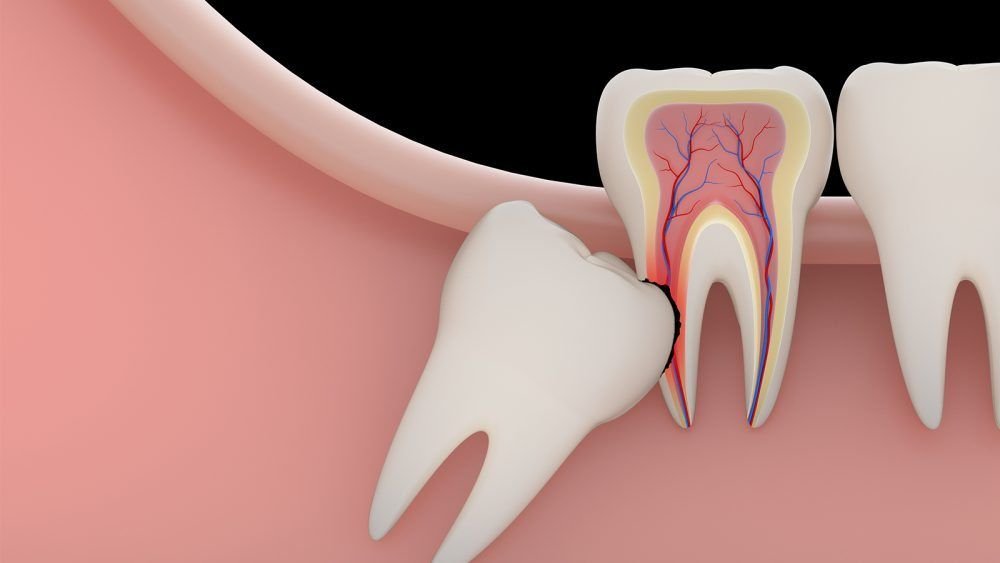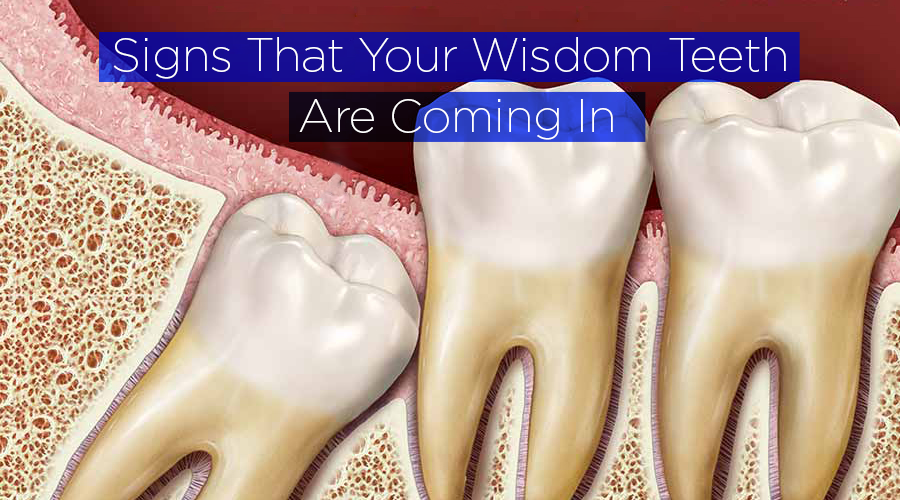The Ways You Can Tell If Your Wisdom Teeth Are Coming In
Most people have wisdom teeth, but others never grow out. Although almost everyone has heard of wisdom teeth, not everyone really knows what they are, when they erupt, and what problems they can cause for other teeth.
Wisdom teeth are closely related to the appearance of pain, but not in all cases, the person experiences complications.
Wisdom teeth are the last molars to erupt and generally begin to appear between the ages of 17 and 25, although it depends on each person. They may appear at an earlier or later age or may never grow up.
Also, since they are not governed by an exact rule, all four wisdom teeth may not even erupt. Therefore, the total number of teeth in an adult denture will vary depending on whether they have wisdom teeth.
An adult person who has already reached the final dentition, including all four wisdom teeth, will have a total of 32 teeth. If wisdom teeth don’t erupt, a person’s jaw will consist of only 28 teeth.
Why Do We Have Wisdom Teeth?

If wisdom teeth don’t follow a stable growth pattern in all people, why do we still have them?
Wisdom teeth had their origin in our ancestors when the human race needed highly developed jaws to be able to eat food that required more chewing. For this reason, they had more space to house their wisdom teeth.
However, as the human species evolved and changed its diet, smaller jaws began to develop.
Although wisdom teeth are associated with pain, there are times when they erupt without complications and present no problems for the rest of the teeth.
Wisdom teeth do not have a fundamental mission in our mouth, so it is usual to extract them if they present any problems. In these cases, the dentist or maxillofacial surgeon must evaluate the possibility of performing surgery to remove them.
How to know if my wisdom teeth are coming out.
As we have indicated previously, although the eruption of wisdom teeth occurs, there are people who do not show symptoms if they grow healthy and aligned.
However, there are many cases where symptoms come in the form of pain, infection, or inflammation. This can occur because wisdom teeth do not grow completely vertical but come out slanted or crooked.
It can also be the case that they come out partially if they do not have enough space.
Some Wisdom Derived Problems

The most symptomatic complication of wisdom teeth is sharp and persistent pain in the area where it is erupting, but they can also lead to other problems.
Both lacks of space and inadequate growth can compromise the structure of the oral cavity. If teeth begin to crowd, oral hygiene becomes substantially more difficult, as tartar and bacteria accumulate in places where a toothbrush cannot reach.
The included wisdom teeth (those that are entirely embedded in the jaw and covered by soft tissue) is highly associated with cyst formation.
Operation of wisdom teeth.
There are two professionals in charge of the extraction of a wisdom tooth: the dentist specialized in surgery and implants and a maxillofacial surgeon.
These specialists will determine, depending on the case, if it is necessary to remove a tailpiece.
As we have commented previously, as they do not have a specific function inside our mouth, they are extracted only if they present problems.
In some cases, the decision is made to operate wisdom teeth when the person already presents symptoms. In other cases, the professional relies on X-rays to determine whether the intervention should be performed preventively before the first symptoms appear.
The surgery is quite simple, it is practiced very frequently, and it can be performed under local anesthesia.
Don’t let time pass: go to the dentist.
A wisdom tooth that does not erupt correctly not only causes pain-related problems but can also compromise other teeth.
The intervention duration depends on the teeth’ conditions and situation (if they have come out entirely or partially, if they are affecting the structures of the mouth, or if all four must be extracted).
Recovery of the patient after surgery

First, you must wait for the effect of the sedation to wear off. In general, during the first hours after the operation, we can carry out a series of guidelines and expect some of the following inconveniences:
- Bleeding: to absorb the blood, a clean, damp gauze can be placed in the area where the gum is bleeding. Although it is something common during the first hours, we should consult with the surgeon if the bleeding does not stop.
- Swelling and inflammation: around the area where the teeth have been removed, this is very common. In order to relieve pain, we can place compresses or cold packs. It is common for the dentist who performed the surgery to prescribe medication to relieve swelling and pain.
There also may be restrictions on the intake of certain foods. As a general rule, eating during the first hours is limited to cold drinks only. It is recommended that the patient follow the dentist’s guidelines and not drink hot drinks or solid food until instructed to do so.
Alcohol and tobacco negatively affect the natural recovery process, so it is advisable to avoid them.
Toothache remedies
Remember that neither wisdom teeth nor surgery has the same consequences from one patient to another, so it is necessary that you consult your dentist or maxillofacial surgeon on the appropriate guidelines in your case.
In fact, the indications offered may be different from those mentioned above since they will have been established according to your needs.
You already know that the recovery time can vary depending on each case.
For this reason, we recommend that you be patient, keep everything you need close to you so that you don’t have to make efforts.
The recovery period can be somewhat uncomfortable, but we must not forget that we will have permanently ended the wisdom teeth’ discomfort and pain once it passes.




Leave a Reply